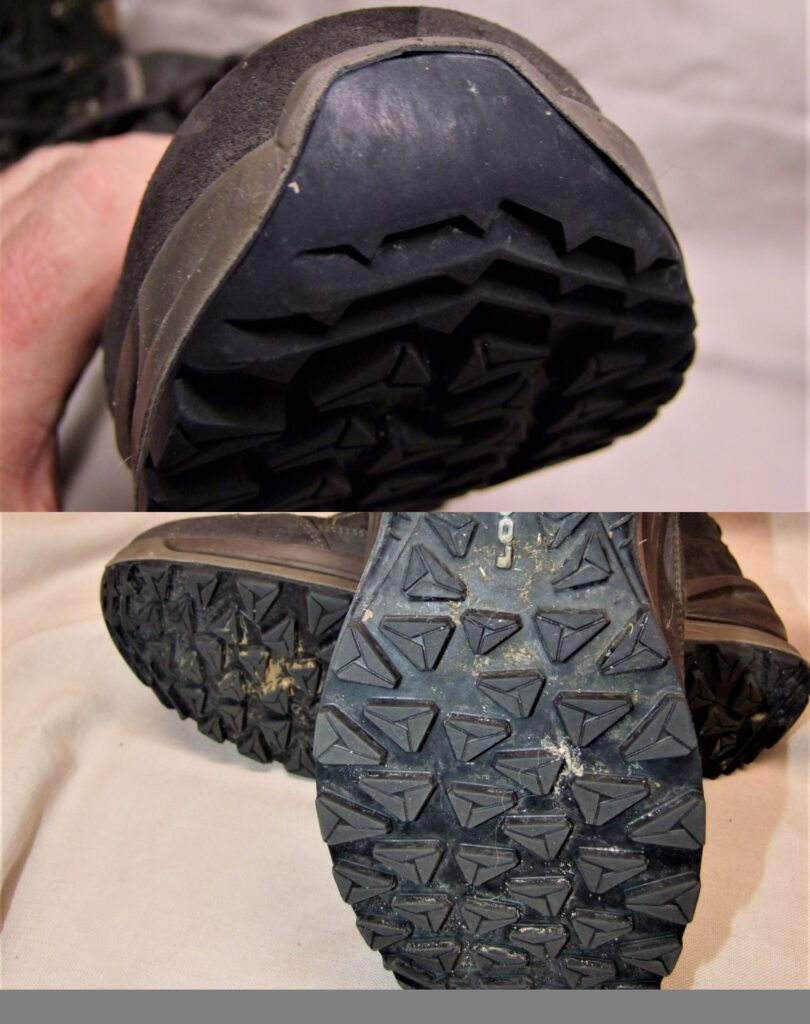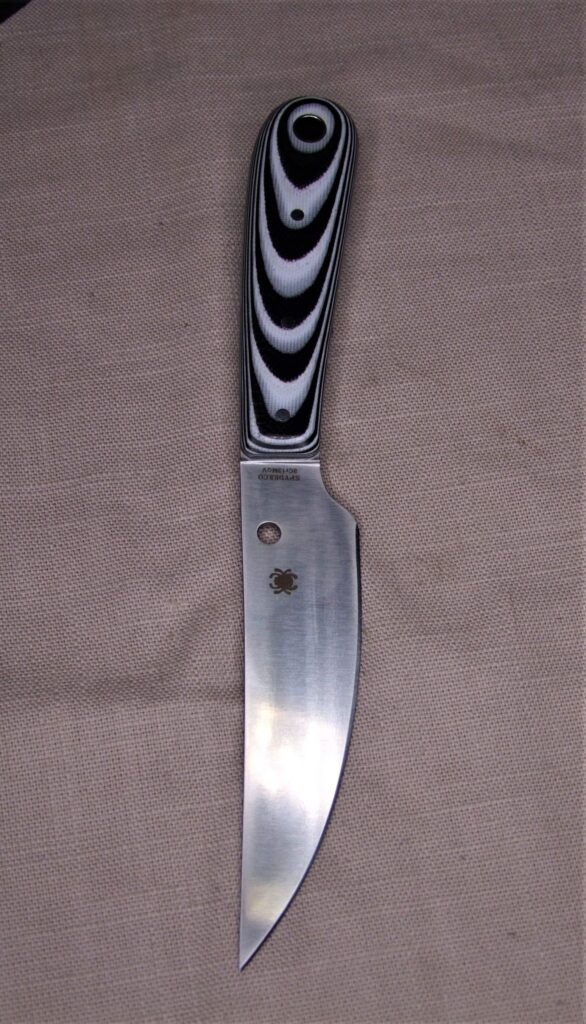
By Scott Smith | Contributing Editor
Hunting season is in full swing in many states. When taking to the field, two items you need are comfortable footwear and knives that will can be used to dress your trophy or cut your sandwich.
In my summer travels I put new boots from Lowa and knives from Spyderco to the test.
Over the last decade I have been wearing Lowa Boots for everything from trips to the store to climbing mountains in Colorado and Wyoming. Their boots have served me in hot dry weather and the worst monsoons. Lowa’s boots wear like iron, yet feel like your favorite pair of well worn athletic shoes.
What sets Lowa apart from other companies is the various specialized boots to give you the best footwear for your activity. Where your feet are concerned one boot does not work for all activities. Varying outsole patterns, levels of support, insulation and do you need a waterproof membrane are all considerations. Lowa also carefully explores boot designs specifically to fit men and women.
This past year, Lowa introduced one of their most technical boots, the Toro Evo. The Toro Evo bridges the gap between all-terrain sport boots and hiking boots.
Like many of Lowa’s boots, the Toro Evo is built on both men’s and women’s lasts in low or midcut. All four styles are Gore-Tex lined with the midcut being available unlined. Having worn them along the Yellowstone River I know firsthand, they will keep your feet dry. The Multi Trac outsole gives excellent traction on dry ground, rocky river beds, wet sandy banks or oozing mud.
While most boots today use various forms of nylon for uppers, the Toro Evo use Nubuck/split leather. This increases support given by the upper without markedly increasing weight. I also appreciated the increased support on the banks and bed of the Yellowstone River. This bed is covered with larger pebbles than can be found at your local landscaping shop. My dog loved walking the river bed and she kept a brisk pace, her four leg drive was not concerned about my footing issues.

Even when the pebbles and rocks were covered with river slime, I did not have that “twisting” ankle feeling. The upper and insole are made into a uni-body using Strobel techniques. This is stitch allows the upper of the boot to be single piece that can be injection molded to the polyurethane MonoWrap and midsole.
Lowa further enhances support with their patented MonoWrap footbed. This wrap runs from the heel of the boot to the toes. As the name implies, your foot is wrapped which keeps your foot from slipping over the midsole of the boot which is one of the leading causes of ankle injuries. All of this is then bonded to the injected polyurethane midsole and outsole. When complete the boot is essentially one bonded unit. I have not had any outsole separation of any of Lowa’s boots. Something I cannot say about other brands.
When putting the Toro Evo through its paces this year, I appreciated all of these features. They are more supportive than my go to shooting boots Lowa’s Innox Pro and much lighter than my Zephyrs that I hike in. The Multi Trac outsole is self-cleaning and is slip resistant, even on wet painted wood. After shooting USPSA matches on the dusty ranges Wyoming and Montana, my dark brown Toro Evos were dust brown. I was surprised that they returned to dark brown after hosing them off. My best friend who works for FEMA summed up her impression of the women’s low cut Toro Evo in one word; Ahhhh, they were that comfortable. Lisa is not concerned about all the tech details, just that they fit true to size, they look good and are comfortable on a disaster scene.
If you are like me and wear orthotics, you will appreciate the Toro Evo and virtually all of Lowa’s boots. Unlike many of the trendy boots seen on the competition field with wafer thin insoles, you will not have to guess what size Lowa will accommodate your orthotics. Simply remove the factory insole and insert your orthotic; you are ready to go.
If you need a boot that is not quite a hard core hiking boot that gives more support than a trail running boot, Lowa’s Toro Evo should be on your short list. With an MSRP of $200.00 this boot is competitively priced and will serve you for years to come.
On the Cutting Edge
When hiking or hunting I have found a fixed blade with a quality sheath to have advantages to a clip-it folder. They are easier to access, easier to use in foul weather and they are stronger.

With those virtues in mind, the knife from Spyderco is the 8.14-inch Bow River. Designed by outdoorsman and knife maker Phil Wilson, this fixed blade knife is affordably priced with a MSRP of $54.00. Using 8Cr13MoV, the Bow River will hold and edge and sharpen easily which makes dressing your game easier. More importantly, this steel is corrosion resistant so you do not have to worry about your prized blade being rust brown by the time you get home from your ventures.
Other key features of the Bow River are the trailing point full flat ground blade. This gives you a sharp point to make puncturing the hide easier. You then have a 4.36-inch blade with 3.65 inches of smooth cutting edge that allows you to make a smooth cut to dress out your game.
Not only does the G10 handle look good but it feels good in your hand. The knife is heel heavy because this handle has a wide rear taper. I found this balance gives you excellent control of the tip and entire blade which makes precise cuts easier. With the triple pinned full length tang, you do not have to worry about the handle separating from the grip.
Spyderco supplies a sewn and riveted black leather belt sheath with the Bow River. This is a friction fit sheath that actually secures the knife very well. While I did not abuse the sheath/knife; I did shake it upside down, tossed it across the room, left it suspended upside down over night and the knife never moved. As secure as the knife is, it drew quickly and smoothly.
Next up is one of Spyderco’s most successful knives, the $150 Native 5. As the name implies this is the fifth generation of this knife. With its folded size of 4-inch and blade length of 2.95 inches, the Native 5 is a perfect size for field carry. Our sample has Spyderco’s combination edge; plain blade and serrated Spyderedge. For field and range use, I prefer the combination blade. The Spyderedge makes short work of rope, nylon webbing and leg tendons and the plain edge cuts everything else.

I like the back lock of the Native because it is easy to operate when wet or wearing gloves. Spyderco gives you the choice of tip up or down and blade forward or rear carry. Not only is the molded fiberglass reinforced nylon textured for a solid grip, but the choil and spine of the blade are gimped. Over the years I have put Natives to the test and have yet to have my index finger slip and slice it.
What I liked about the Native 5 is, its weight, 2.5 ounces. Combined with the knife’s compact size, you can carry it all day long and not know it is clipped to your pocket. One more thing that will appeal to a lot of folks is where the Native 5 is made; right here in the U.S.A. Spyderco builds the Native at their Golden, CO plant. This allows them to control production from start to finish.
Hopefully, you will have success in the woods and you will be able to put Spyderco’s Native 5 and Bow River to use. If you don’t have one, put it on your Christmas or Hanukkah list or give them as gifts to loved ones. Remember to be safe and have fun.



